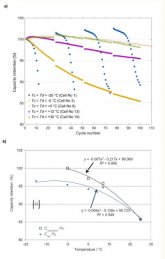As I wait for 16 cells to arrive, I have been day dreaming about how I will build this battery. I like how @Off-Grid-Garage did it, and plan to take a similar approach. I plan on getting a heat pen, and custom fitting the enclosure with 1 or 2" of foam, as this battery will experience harsh winter weather. My half brained thought at this point would be to custom build a "box" for the cells, out of foam, with a foam lid that would fit nice and tight. The bottom of the box would have heat elements and an aluminum plate. Then in the summer, maybe take the lid off and install some fans in the main enclosure to circulate air.
I know how bad cold temps are, but how worried do I need to be about heat? I do not plan on drawing more than 100A from the pack.
I know how bad cold temps are, but how worried do I need to be about heat? I do not plan on drawing more than 100A from the pack.



